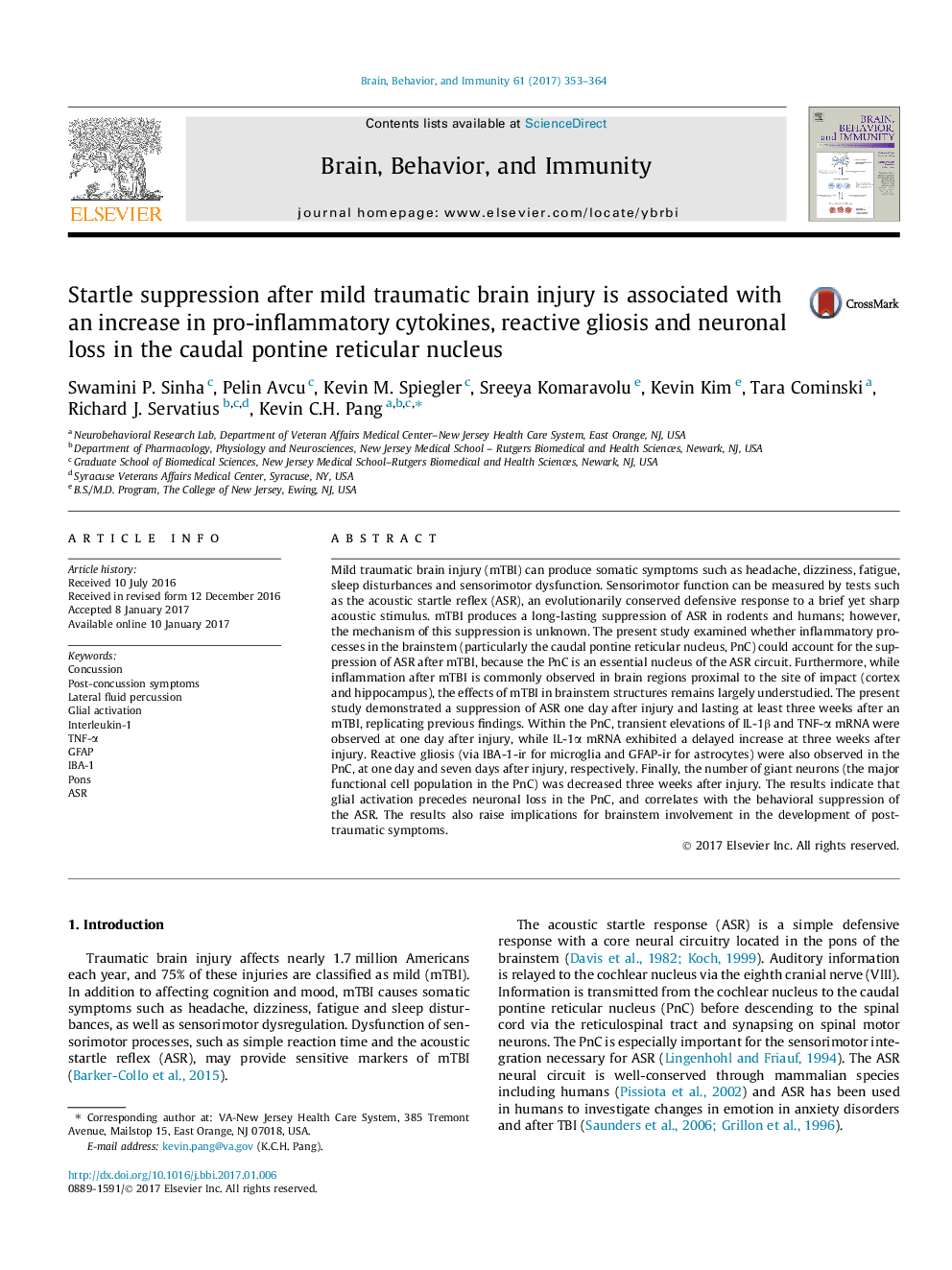| کد مقاله | کد نشریه | سال انتشار | مقاله انگلیسی | نسخه تمام متن |
|---|---|---|---|---|
| 5040717 | 1473906 | 2017 | 12 صفحه PDF | دانلود رایگان |
- Glial activation in the brainstem after mTBI is largely understudied.
- mTBI suppresses the acoustic startle response (ASR), a pontine mediated reflex.
- mTBI increases IL-1α, IL-1β, and TNF-α mRNA in the pons.
- mTBI produces reactive gliosis as well as delayed neuronal loss in the pons.
- Glial activation precedes cell loss and correlates with the suppression of the ASR.
Mild traumatic brain injury (mTBI) can produce somatic symptoms such as headache, dizziness, fatigue, sleep disturbances and sensorimotor dysfunction. Sensorimotor function can be measured by tests such as the acoustic startle reflex (ASR), an evolutionarily conserved defensive response to a brief yet sharp acoustic stimulus. mTBI produces a long-lasting suppression of ASR in rodents and humans; however, the mechanism of this suppression is unknown. The present study examined whether inflammatory processes in the brainstem (particularly the caudal pontine reticular nucleus, PnC) could account for the suppression of ASR after mTBI, because the PnC is an essential nucleus of the ASR circuit. Furthermore, while inflammation after mTBI is commonly observed in brain regions proximal to the site of impact (cortex and hippocampus), the effects of mTBI in brainstem structures remains largely understudied. The present study demonstrated a suppression of ASR one day after injury and lasting at least three weeks after an mTBI, replicating previous findings. Within the PnC, transient elevations of IL-1β and TNF-α mRNA were observed at one day after injury, while IL-1α mRNA exhibited a delayed increase at three weeks after injury. Reactive gliosis (via IBA-1-ir for microglia and GFAP-ir for astrocytes) were also observed in the PnC, at one day and seven days after injury, respectively. Finally, the number of giant neurons (the major functional cell population in the PnC) was decreased three weeks after injury. The results indicate that glial activation precedes neuronal loss in the PnC, and correlates with the behavioral suppression of the ASR. The results also raise implications for brainstem involvement in the development of post-traumatic symptoms.
Journal: Brain, Behavior, and Immunity - Volume 61, March 2017, Pages 353-364
